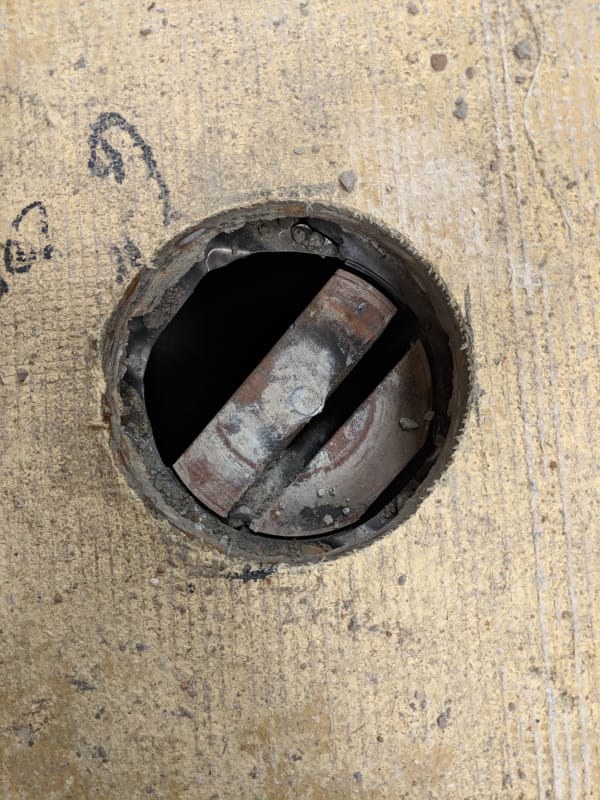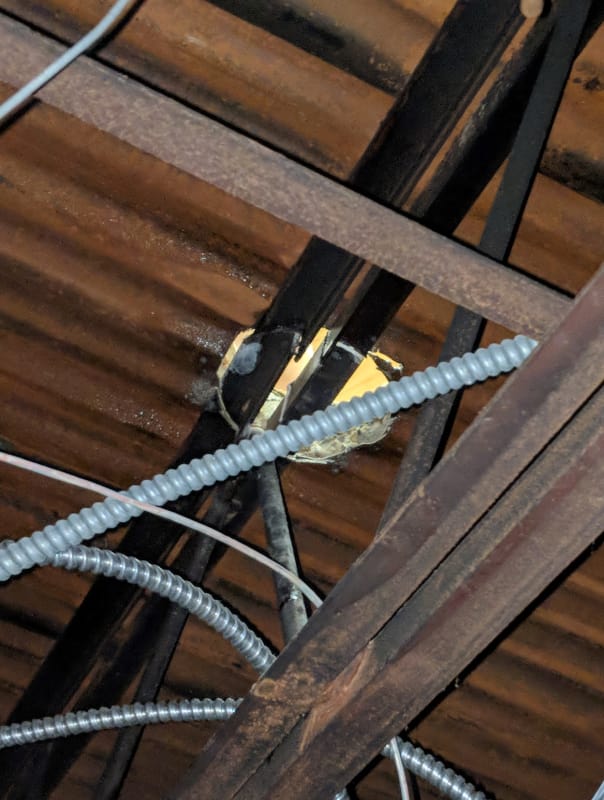EPCI-Steel
Structural
- Mar 17, 2018
- 34
So I have a bar joist where a contractor core drilled through the top chords, just like Kootk's post from a week ago. It's in an older office building with no readily available information on the joist in question. I had the idea that I could design a simple chord reinforcement to reinstate the strength of the original chord based on conservative assumption (50ksi) of its grade, and tie the web members together with a tie plate (the web was also cut right through the center of the node at the top chord). The joist has shear studs in the concrete slab, so it appears to have deflected little if any at all, but going to take measurements tomorrow.
Methodology:
Determine allowable compression of existing chord member at 50 ksi (P_chord).
Design reinforcement and connecting welds for axial + bending from P_chord and CG offset between members
Result:
Any shape which can be welded in the V of the angle fails due to load eccentricity, by a lot.
And while my mind is telling me this will work no problem with a nice hefty square bar nested in the angles and a horizontal tie plate between the reinforcements where the top chords were severed, my calcs do not show it.
Suggestions please!


Methodology:
Determine allowable compression of existing chord member at 50 ksi (P_chord).
Design reinforcement and connecting welds for axial + bending from P_chord and CG offset between members
Result:
Any shape which can be welded in the V of the angle fails due to load eccentricity, by a lot.
And while my mind is telling me this will work no problem with a nice hefty square bar nested in the angles and a horizontal tie plate between the reinforcements where the top chords were severed, my calcs do not show it.
Suggestions please!


